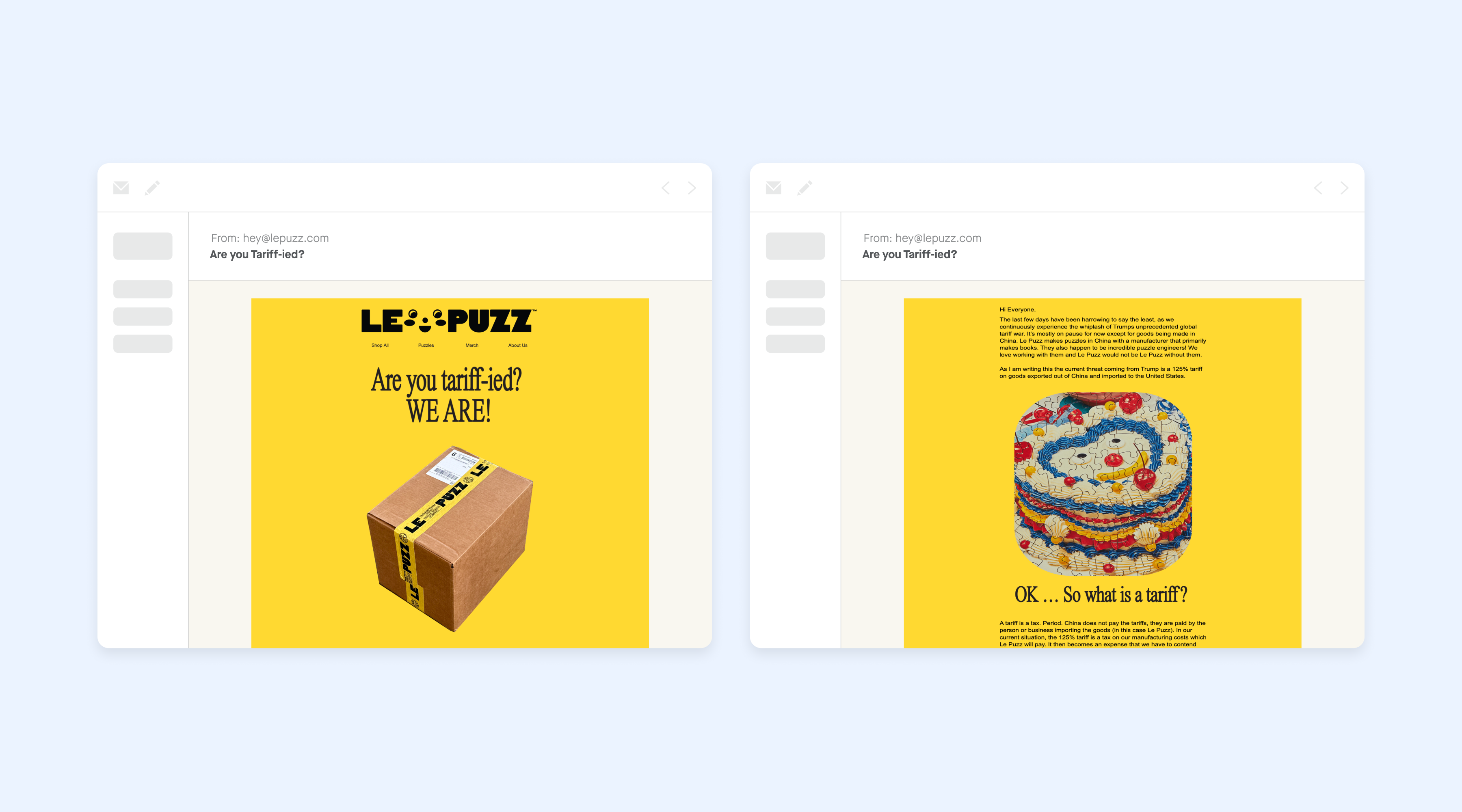
New releases
A smarter, simpler Attentive
Explore new features →
Explore new features →

Tariffs have introduced volatility into the market. While consumers are understandably weary, they’re making thoughtful changes to their spending and shopping habits. Now, marketers aren’t just paying close attention to these shifts, they’re making budget and strategy shifts of their own.
Read on to get our latest economic pulse analysis, and how marketers can adapt in both the short and long-term to increase their revenue moat and agility.
As we close out April, we’re seeing:
Jen Brett, who leads Attentive’s Voice of the Market program, is keeping a close eye on these trends. Her expert analysis is:
Brands need to shift their dollars to acquisition and DTC sales to build their moats to weather long-term uncertainty. These two focus areas give brands a solid foundation to operate off of and don’t require extra budget. They also enable brands to be more nimble and quickly adapt to changes in consumer spending.
Your DTC efforts are limited by the number of shoppers you can reach out to (and the channels you can engage them on).
While you probably already have a large and engaged email audience, it’s important to rapidly grow your SMS list to ensure you can reach shoppers on their preferred channels. In our recent State of Personalized Messaging report, 58% of consumers told us they’re more likely to make a purchase when they receive the same promotion across channels.
In the near-term, you’ll be able to automatically reach out to shoppers when they’re on your site with high-ROI nudges. These nudges give you more revenue to invest back into your marketing program, or add a buffer to your tightening margins.
In the long-term, you’ll have a moat of subscribers you can reach out to when they’re ready to start spending again with targeted campaigns.
Pro tip: Invite your email subscribers to sign up for SMS. You can build urgency by inviting shoppers to sign up to lock in pricing before tariffs go into effect.
Your SMS and email programs are your direct line to your customers. Unlike the data on your third-party advertising platforms, you own the data you collect from your email and SMS subscribers. This information can give you critical insight in real-time into customer sentiment and preferences, which you can use to inform your overall marketing strategy.
In the immediate term, you can use this data to make your SMS and email marketing even more efficient. Behavior-based segmentation will help you increase your ROI by personalizing campaign messages to subscribers' shopping behaviors and preferences. And stronger subscriber identification—helping you recognize more subscribers who come to your site—will help you boost revenue by sending more high-converting journeys.
If you’re a wholesaler or have a strong retail presence, your direct marketing channels are your biggest weapons. Your wholesale and retail sales have much tighter profit margins than your direct sales. As much as possible, you need to bring shoppers back to your site to protect your margins. Again—the more revenue you can generate, the more you can reinvest into your business or use to wait out economic uncertainty.
If you’re a DTC brand, direct channels help you stay top of mind with price-motivated shoppers who are weighing their options. Transparent, value-driven communications with shoppers will help you deepen relationships with shoppers and maintain trust throughout price fluctuations.

Plus, these owned channels give you direct control over your budget during uncertain times. Usage-based marketing like SMS and email gives you more flexibility, allowing you to increase or decrease your sends as you gain performance insights in real time.
Pro tip: Lean on triggered journeys to bring shoppers back to your site and drive conversions. You’ll drive revenue without eating a significant portion of your budget, and you’re guaranteed to achieve a high ROI.